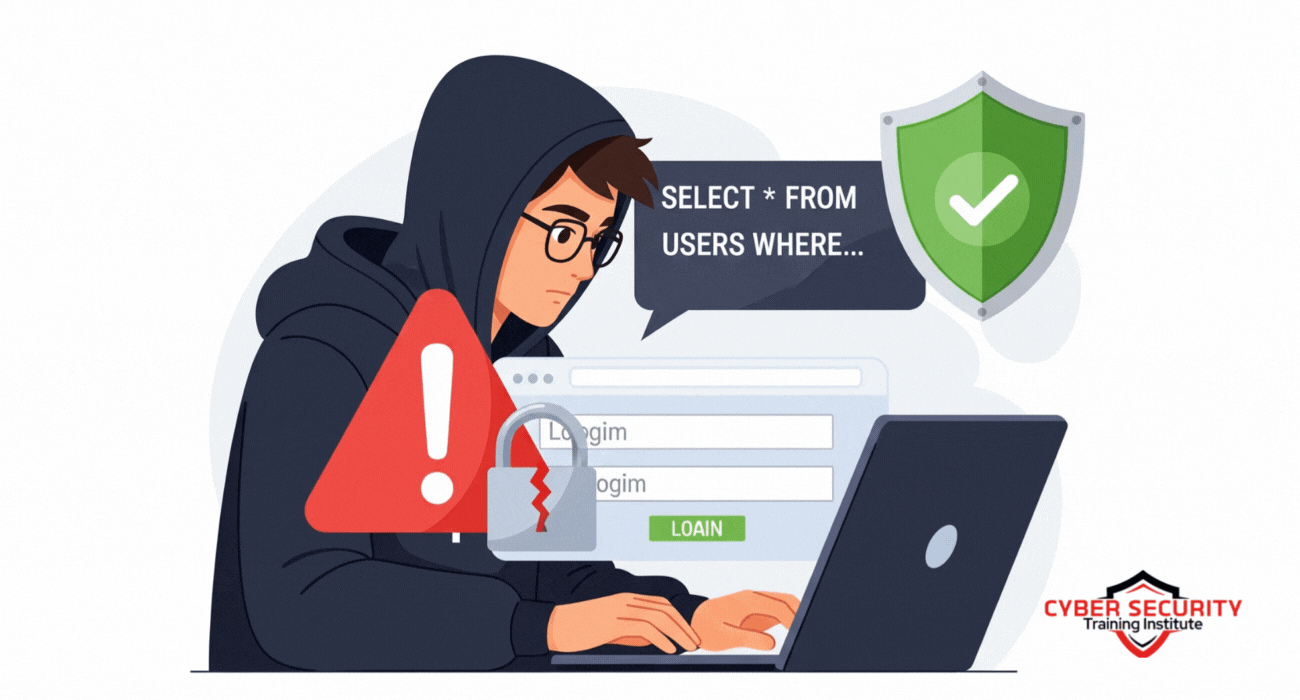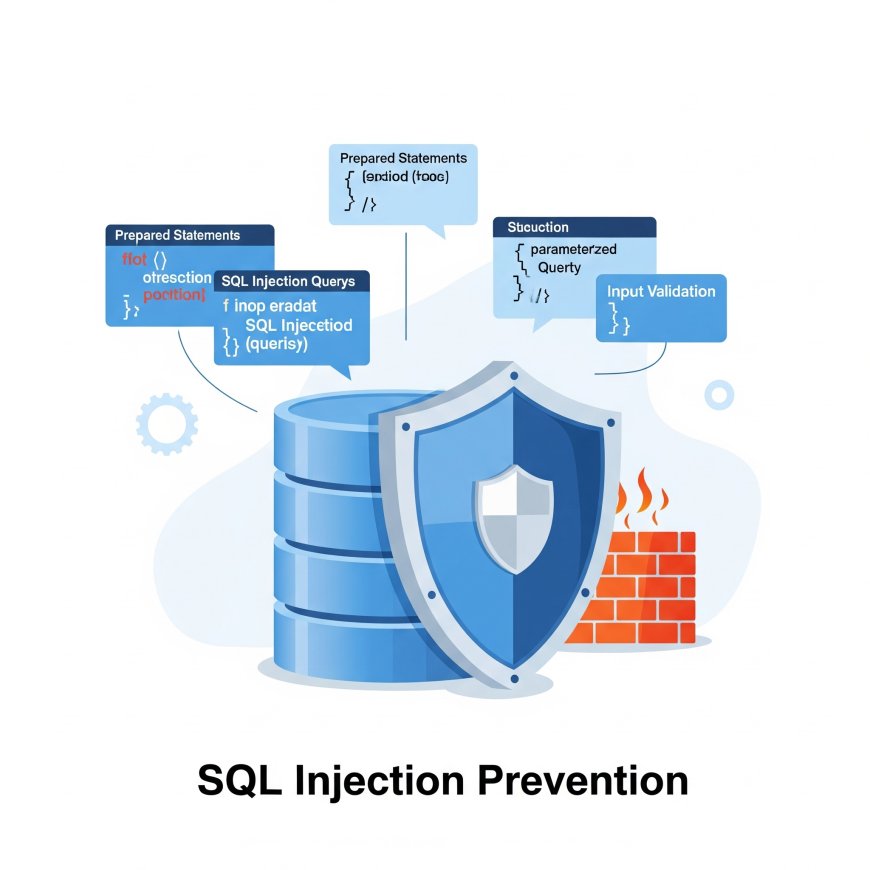How Hackers Use SQL Injection | And How to Prevent It
Imagine this: you’ve built a website for your small business, and it’s running smoothly. Customers are signing up, browsing, and making purchases. Then, one day, you wake up to find your database has been compromised—customer data stolen, accounts tampered with, or worse, your entire system locked. The culprit? A sneaky technique called SQL injection. This blog post dives into what SQL injection is, how hackers exploit it, and, most importantly, how you can protect your website from this common yet devastating cyberattack. Whether you’re a beginner or a seasoned developer, this guide will break it down in simple terms and arm you with practical steps to stay secure.

Table of Contents
- What Is SQL Injection?
- How Hackers Use SQL Injection
- Real-World Examples of SQL Injection Attacks
- How to Prevent SQL Injection
- Tools for Detecting and Preventing SQL Injection
- Best Practices for Developers
- Conclusion
- Frequently Asked Questions (FAQs)
What Is SQL Injection?
SQL injection (SQLi) is a type of cyberattack where a hacker inserts malicious SQL code into a web application’s input fields, like login forms or search bars, to manipulate the database behind the scenes. SQL, or Structured Query Language, is used to communicate with databases, such as retrieving user data or updating records. When a website doesn’t properly check or “sanitize” user input, hackers can sneak in SQL commands that trick the database into doing things it shouldn’t—like revealing sensitive information or deleting data.
Think of SQL injection like someone slipping a forged note into a librarian’s request system. Instead of asking for a book, the note might trick the librarian into handing over the entire library catalog or even burning books. It’s sneaky, and the consequences can be severe.
How Hackers Use SQL Injection
Hackers exploit SQL injection by targeting vulnerabilities in a website’s input fields. Here’s a step-by-step look at how they do it:
- Identifying Vulnerable Fields: Hackers test input fields (like login forms, search bars, or comment sections) by entering special characters, such as single quotes ('), to see if the application responds with an error. An error often means the system is vulnerable because it’s not properly handling the input.
- Crafting Malicious Input: Once a weak spot is found, hackers inject SQL code. For example, in a login form expecting a username and password, they might enter something like
' OR '1'='1in the password field. This tricks the database into thinking the condition is always true, potentially bypassing the login. - Extracting Data: If successful, hackers can extract sensitive data, such as user credentials, credit card numbers, or personal information, by manipulating the SQL query to return more data than intended.
- Modifying or Deleting Data: In more severe cases, hackers can alter or delete database records, like changing account balances or wiping out entire tables.
- Gaining Full Control: In extreme cases, SQL injection can lead to full system compromise, allowing hackers to execute commands on the server, install malware, or create backdoors for future access.
Here’s a simplified example of a vulnerable SQL query:
Suppose a login form sends this query to the database:
SELECT * FROM users WHERE username = '[user input]' AND password = '[user input]';
If a hacker enters ' OR '1'='1 as the password, the query becomes:
SELECT * FROM users WHERE username = 'admin' AND password = '' OR '1'='1';
Since 1=1 is always true, the database might return the user’s data, granting unauthorized access.
Real-World Examples of SQL Injection Attacks
SQL injection has caused some of the biggest data breaches in history. Here are a few notable examples:
| Company/Organization | Year | Impact |
|---|---|---|
| Sony Pictures | 2011 | Hackers used SQL injection to steal personal data of over 1 million users, including passwords and email addresses. |
| Heartland Payment Systems | 2008 | SQL injection led to the theft of 130 million credit card numbers, costing the company millions. |
| TalkTalk | 2015 | A SQL injection attack exposed the data of 157,000 customers, resulting in a £400,000 fine. |
These examples show that SQL injection isn’t just a theoretical threat—it’s a real-world problem with massive consequences for businesses and users alike.
How to Prevent SQL Injection
Preventing SQL injection requires a combination of secure coding practices and proper system configuration. Here are the most effective ways to protect your website:
- Use Prepared Statements and Parameterized Queries: Instead of building SQL queries by directly inserting user input, use prepared statements. These separate the SQL code from the data, making it impossible for hackers to inject malicious code. Most programming languages, like Python, PHP, and Java, support prepared statements through libraries like PDO or JDBC.
- Input Validation and Sanitization: Always validate user input to ensure it matches expected formats (e.g., emails should look like emails, numbers should only contain digits). Sanitize inputs by removing or escaping special characters that could interfere with SQL queries.
- Use an ORM (Object-Relational Mapping): ORMs like SQLAlchemy (Python) or Hibernate (Java) abstract database interactions, reducing the chance of writing vulnerable SQL queries. They often include built-in protections against SQL injection.
- Escape User Input: If you must use dynamic queries, escape special characters (like quotes) to prevent them from being interpreted as SQL code. However, this should be a last resort—prepared statements are safer.
- Limit Database Permissions: Use the principle of least privilege. Create database users with minimal permissions—only what’s necessary for the application to function. For example, a web app shouldn’t have a database user with admin-level access.
- Use a Web Application Firewall (WAF): A WAF can detect and block suspicious input patterns, like SQL injection attempts, before they reach your application.
- Keep Software Updated: Regularly update your database software, frameworks, and libraries to patch known vulnerabilities.

Tools for Detecting and Preventing SQL Injection
Developers and security professionals can use tools to identify and fix SQL injection vulnerabilities. Here are some popular ones:
- SQLMap: An open-source tool that automates the process of detecting and exploiting SQL injection vulnerabilities. It’s great for testing your own systems (with permission).
- Burp Suite: A comprehensive web vulnerability scanner that can identify SQL injection and other security issues.
- OWASP ZAP: Another open-source tool for finding vulnerabilities in web applications, including SQL injection.
- Acunetix: A commercial web vulnerability scanner that checks for SQL injection and other threats.
- ModSecurity: An open-source WAF that can block SQL injection attempts in real time.
Using these tools during development and testing can catch vulnerabilities before hackers do.
Best Practices for Developers
Beyond technical fixes, adopting secure development habits is key to preventing SQL injection. Here’s what every developer should do:
- Follow Secure Coding Guidelines: Familiarize yourself with standards like OWASP’s Secure Coding Practices, which provide detailed advice on avoiding common vulnerabilities.
- Conduct Regular Code Reviews: Have team members review code for potential security flaws, including improper handling of user input.
- Perform Penetration Testing: Regularly test your application for vulnerabilities using ethical hacking techniques or professional services.
- Educate Your Team: Ensure all developers understand SQL injection and other common attacks. Regular training keeps security top of mind.
- Monitor and Log Activity: Set up logging to detect suspicious activity, like repeated failed login attempts or unusual database queries.
By building security into every stage of development, you can significantly reduce the risk of SQL injection.
Conclusion
SQL injection remains one of the most common and dangerous cyberattacks, but it’s also preventable with the right knowledge and tools. Hackers exploit poorly secured input fields to manipulate databases, steal data, or even take over systems. By using prepared statements, validating input, limiting permissions, and staying vigilant with tools and best practices, you can protect your website and its users. Security is an ongoing process—stay informed, keep your systems updated, and make secure coding a priority. With these steps, you’ll be well-equipped to keep hackers at bay.
Frequently Asked Questions (FAQs)
What is SQL injection in simple terms?
SQL injection is when hackers insert malicious SQL code into a website’s input fields to manipulate or steal data from the database.
Why is SQL injection dangerous?
It can expose sensitive data, allow unauthorized access, or even destroy a database, leading to financial and reputational damage.
How do hackers find SQL injection vulnerabilities?
They test input fields with special characters or SQL code to see if the application returns errors or behaves unexpectedly.
Can SQL injection be automated?
Yes, tools like SQLMap automate the process of finding and exploiting SQL injection vulnerabilities.
What is a prepared statement?
A prepared statement is a way to write SQL queries that separates code from user input, preventing malicious code from being executed.
Does input validation stop SQL injection?
It helps by ensuring input matches expected formats, but it’s not enough alone—prepared statements are more effective.
What is an ORM, and how does it help?
An ORM (Object-Relational Mapping) is a tool that simplifies database interactions and often includes built-in protections against SQL injection.
Can a firewall prevent SQL injection?
A Web Application Firewall (WAF) can detect and block SQL injection attempts but should be used alongside other protections.
Is SQL injection only a problem for websites?
No, any application that interacts with a database, like mobile apps or desktop software, can be vulnerable.
How common are SQL injection attacks?
They’re very common—SQL injection is consistently listed among the top web vulnerabilities by OWASP.
Can updating software prevent SQL injection?
Updates can patch known vulnerabilities in database systems or frameworks, reducing the risk of attacks.
What is the principle of least privilege?
It means giving database users only the permissions they need to do their job, limiting the damage of a successful attack.
Can SQL injection lead to full system compromise?
Yes, in severe cases, hackers can use SQL injection to execute commands on the server or install malware.
Are there free tools to test for SQL injection?
Yes, tools like SQLMap and OWASP ZAP are free and effective for testing vulnerabilities.
Does HTTPS prevent SQL injection?
No, HTTPS encrypts data in transit but doesn’t protect against SQL injection, which targets the application layer.
Can SQL injection be detected in logs?
Yes, suspicious patterns like unusual queries or repeated errors in logs can indicate SQL injection attempts.
Is SQL injection a new threat?
No, it’s been around since the 1990s, but it remains a major threat due to poor coding practices.
Can small websites be targeted for SQL injection?
Yes, hackers often target smaller sites with weaker security, as they’re easier to exploit.
What should I do if my site is attacked?
Disconnect the affected system, analyze logs, patch vulnerabilities, and notify users if their data was compromised.
Is learning secure coding enough to prevent SQL injection?
It’s a great start, but regular testing, updates, and monitoring are also essential for ongoing security.
What's Your Reaction?
 Like
0
Like
0
 Dislike
0
Dislike
0
 Love
0
Love
0
 Funny
0
Funny
0
 Angry
0
Angry
0
 Sad
0
Sad
0
 Wow
0
Wow
0
















